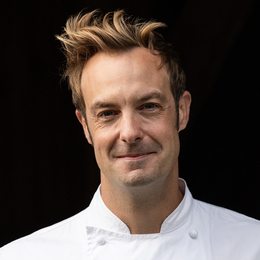Knowledge Base > Barton Seaver - Great Grains!

Barton Seaver - Great Grains!
This event was on
Tuesday, October 25, 2022 at 11:00 am Pacific, 2:00 pm Eastern
Join Chef Barton Seaver to discuss the wide world of grains – from barley and corn to quinoa and winter wheat berries, and everything in between. Whole grains offer great health bene… Read More.
Question:
Can you explain the parts of a whole grain?
Answer:
So I I just I have a not a whole grain, but I have garlic. Any of you who have joined me before know that I live on a garlic Farm. I have a little thing for garlic love me some garlic. Things on you. So think of this garlic like a whole grain. So on the outside, you have the brand which is the several layers of wrapping basically that protects it so that's sort of like the skin, right and then on the inside you have the endosperm so that in the garlic you can see this and again, this is not a whole grain and I know but I'm just showing you this so it has the endosperm. So this is that piece of the inside of the Of the well, and this is a bulb but of the grain that is the next Plant right that is what is going to form roots that is what is going to succeed this and then this is the end of endosperm what we think of as the rest of the garlic there sort is the endosperm. That is the food for The Germ right, so that's that's how whole grains are formed and when you get a milled or refined grain, basically what you're getting is that brand removed so that protective vitamin Rich mineral Rich outer Hull you are getting the germ often removed from that inside and so you're Betty basically getting just the endosperm that is sort of the enriched white flower there and because a lot of those minerals and nutrients phytonutrients fiber all of that is taken out by removing the brand that sort of the outer whole skin again, Oftentimes you'll see that it's fortified. And so what that means is nutrients and minerals have been added back in and this was due to government regulations because we were showing you getting diseases and sick from nutrient mineral deficiencies that plague many cultures inside these across the world, but some in the developed world, there's sort of an easy fix which is just to put nice and riboflavon in vitamin d and vitamin B back into the grains that we pulled them out of It's a little bit silly. Right? So when it comes to the question also a Tony F was a yeah Tony that you asked a big part of whole grains is getting used to them. You know, I I've eaten white rice just my family growing up. That's what we ate. I've had to get used to brown rice. Part of getting used to brown rice is getting used to how long it takes to cook. It's not 17 minutes on the stovetop you're talking about an hour basically part of getting used to whole grains.